Introduction to the national paradores
Spain, a country steeped in history and diverse cultures, offers a unique way to immerse oneself in its past: through its Paradores Nacionales. These are not just hotels; they are historical landmarks transformed into luxurious accommodations.
- Brief history and mission of the paradores:
The concept of the Paradores began in the early 20th century, with the aim of promoting tourism in Spain’s most beautiful and historically significant areas. The first of these, the Parador de Gredos in Ávila, was inaugurated in 1928 by King Alfonso XIII. Since then, the network has expanded to include over 90 establishments, each carefully chosen for its historical, cultural, or natural value. Managed by the state-owned company Paradores de Turismo de España (Official Website), their mission is not just to offer top-notch hospitality, but also to preserve the rich heritage of Spain. - The fusion of history, culture, and hospitality:
Staying in a Parador is like taking a step back in time. Imagine sleeping in a medieval fortress, a former royal palace, or a centuries-old monastery. These establishments have been meticulously restored and adapted, ensuring that guests experience modern comforts while being surrounded by history. The walls echo tales of past eras, from Moorish reigns to the Spanish Renaissance. Moreover, each Parador offers a taste of the region’s culinary delights, ensuring that guests not only learn about Spain’s history but also savor its rich gastronomic traditions.
Paradores in palaces: A royal experience
Spain’s rich history of monarchs, dukes, and nobility has left a legacy of palatial structures scattered across its landscape. The Paradores initiative has transformed some of these grand edifices into luxurious accommodations, allowing travelers to experience a taste of Spain’s regal past. Here, we spotlight three such palatial Paradores that promise an experience akin to royalty.
- Parador de Lerma (Burgos):
Perched atop a hill and overlooking the picturesque town of Lerma, this Parador is housed in a 17th-century ducal palace. Commissioned by the Duke of Lerma and finished in 1617, it stands as a testament to the Herrerian style of architecture, characterized by its austerity and grandeur. The palace, with its impressive courtyard and balconies, offers panoramic views of the Arlanza river valley. Guests can stroll through its grand halls, imagining the days when it served as a place of rest for King Felipe III. The town of Lerma itself, with its arcaded main square and historic churches, adds to the charm of staying in this palatial Parador. (Official Website)
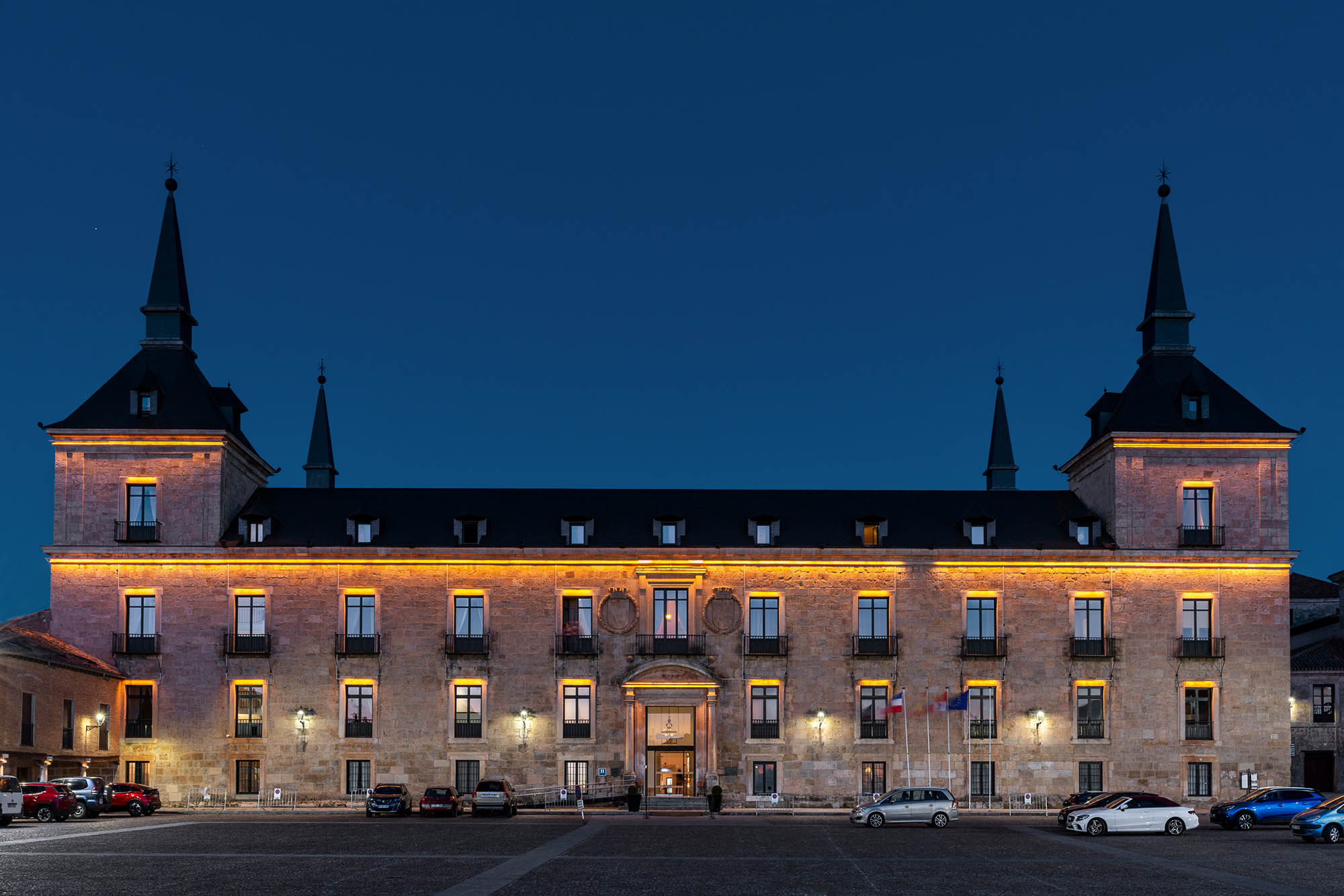
- Parador de Plasencia (Cáceres):
Nestled in the historic town of Plasencia, this Parador is a former convent that dates back to the 15th century. The Convent of Santo Domingo, as it was originally known, seamlessly blends Gothic and Renaissance architectural elements. The cloister, with its two-story arcades and vaulted ceilings, is a serene spot for reflection. Modern amenities are thoughtfully integrated, ensuring that the building’s historic charm remains undisturbed. The town of Plasencia, with its ancient walls and cobbled streets, offers a journey back to medieval times, making the stay even more enchanting. (Official Website) - Parador de Alcalá de Henares (Madrid):
Located in the birthplace of the illustrious writer Miguel de Cervantes, this Parador is a blend of tradition and modernity. Alcalá de Henares, a UNESCO World Heritage site, is renowned for its rich literary history and well-preserved architecture. The Parador itself is situated in a 17th-century monastery-school, where the echoes of scholars from the past can almost be heard. The juxtaposition of contemporary design elements with the building’s historic features creates a unique ambiance. Guests can explore the town’s historic university, the house of Cervantes, and the myriad of Renaissance and Baroque buildings that dot its landscape. (Official Website)
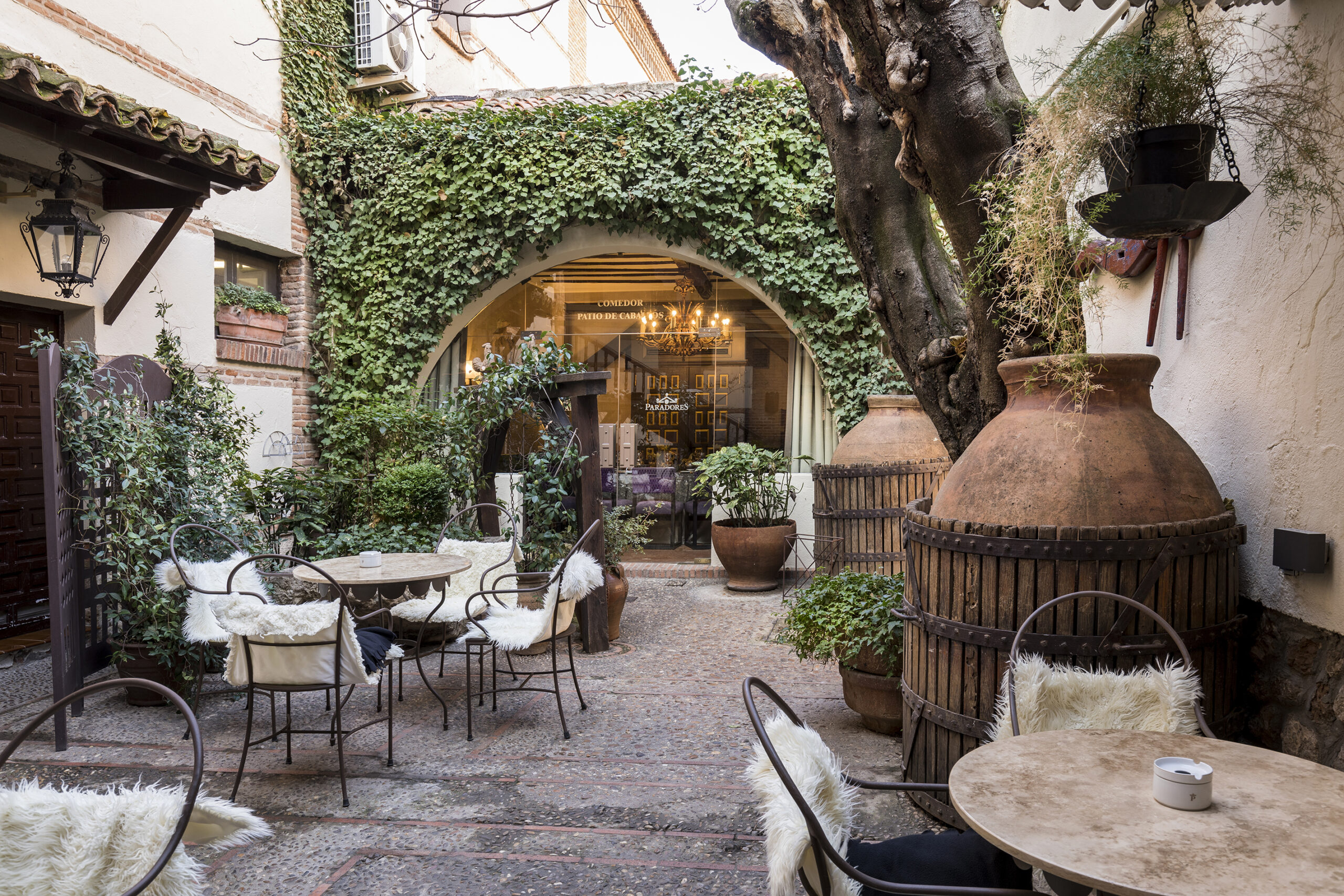
Staying in these palatial Paradores is more than just a night’s rest; it’s a journey through Spain’s illustrious past, a chance to walk the halls once tread by dukes and monarchs, and an opportunity to immerse oneself in the nation’s rich tapestry of history and culture.
Paradores in fortresses and castles: A journey through time
Spain’s turbulent history, marked by battles, conquests, and reconquests, has bequeathed it with a plethora of fortresses and castles. These towering structures, once symbols of power and defense, now serve as gateways to the past for travelers. The Paradores initiative has breathed new life into these ancient edifices, transforming them into luxurious accommodations without compromising their historical integrity. Let’s embark on a journey through some of Spain’s most iconic fortresses and castles.
- Parador de Sigüenza (Guadalajara):
Dominating the landscape of the quaint town of Sigüenza is its majestic medieval castle. Dating back to the 8th century, this fortress has witnessed the ebb and flow of various civilizations, from the Moors to the Christians. Now, as a Parador, it offers guests the unparalleled experience of staying within its ancient walls. The castle’s battlements offer panoramic views of the surrounding countryside, transporting travelers to a time when knights and nobles roamed these halls. The town of Sigüenza, with its Gothic cathedral and historic streets, complements the medieval charm of the Parador. (Official Website)
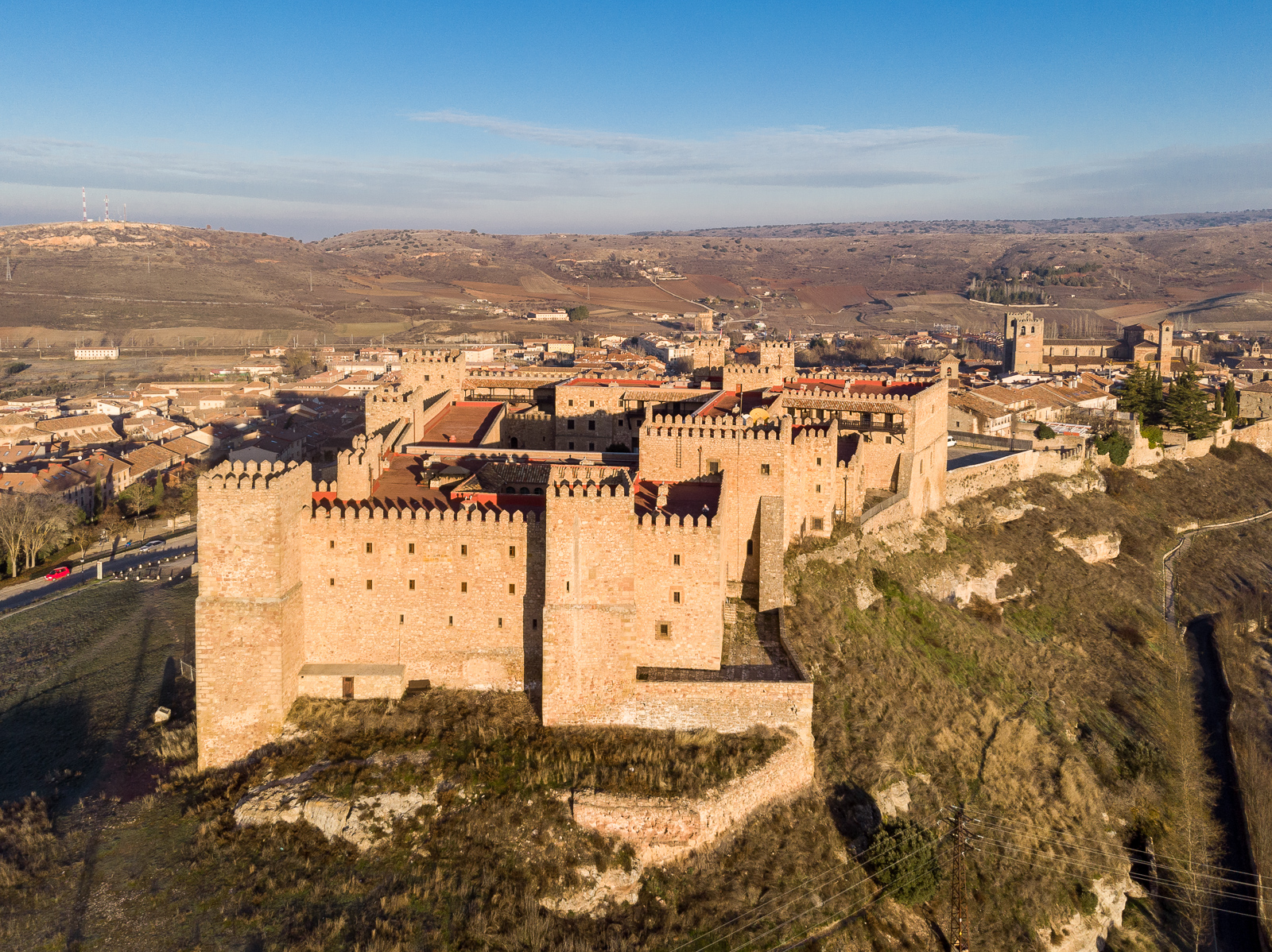
- Parador de Jaén:
Perched atop the Santa Catalina hill, this Parador is housed in a former Arab fortress. Its imposing towers and battlements stand as a testament to the architectural prowess of the Moors. The interior, with its vaulted ceilings and intricate stonework, exudes an aura of grandeur. From its vantage point, guests are treated to sweeping views of the city of Jaén and the olive groves that stretch beyond. The fortress’s strategic location, which once made it a coveted prize for various rulers, now ensures that guests enjoy unparalleled vistas and sunsets. (Official Website) - Parador de Cardona (Barcelona):
Nestled in the heart of Catalonia, the Parador de Cardona is a journey through millennia. This 9th-century fortress, with its Romanesque church and Minyona tower, is steeped in legends and tales of yore. The castle’s thick walls and medieval ambiance are accentuated by period-appropriate furnishings, ensuring an authentic experience. Beyond its walls, the town of Cardona offers attractions such as the salt mines and the bustling market square, making the stay even more enriching. (Official Website)
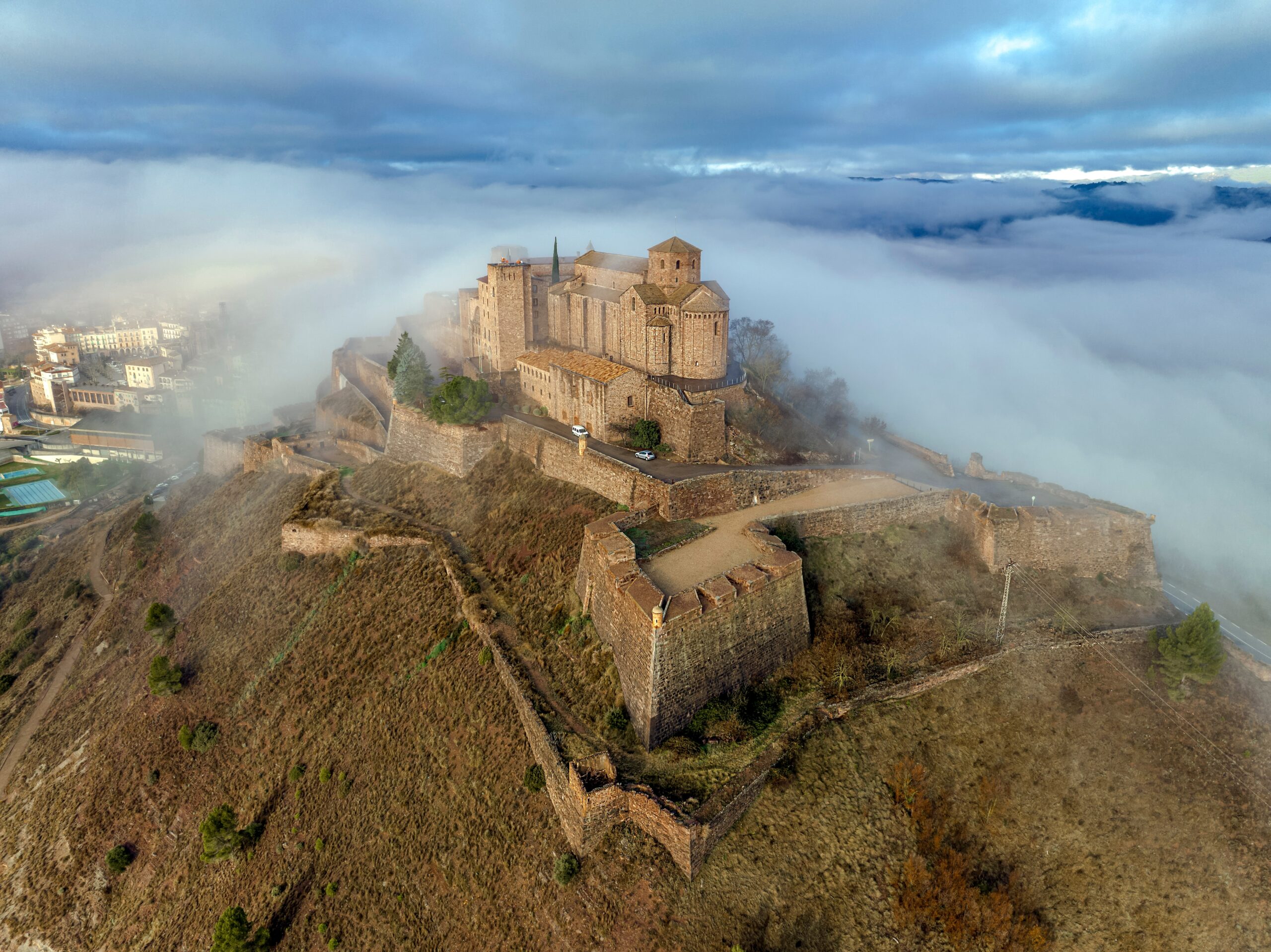
Staying in these fortress Paradores is akin to traveling through time. Each stone, each turret, and each archway has a story to tell. For travelers seeking more than just accommodation, these Paradores offer a deep dive into Spain’s rich tapestry of history, culture, and architecture.
Paradores in natural settings: embracing Spain’s breathtaking landscapes
While Spain’s historical edifices are undoubtedly captivating, the country’s natural beauty is equally mesmerizing. Nestled amidst this splendor, several Paradores offer travelers a unique opportunity to immerse themselves in Spain’s diverse landscapes, from verdant forests to rugged mountains. These establishments, harmoniously integrated into their surroundings, promise an experience where luxury meets nature.
- Parador de Cazorla (Jaén):
Tucked away in the heart of the Sierras de Cazorla, Segura y Las Villas Natural Park, this Parador is a haven for nature enthusiasts. The vast expanse of this park, the largest protected area in Spain, is a mosaic of dense forests, gushing rivers, and diverse fauna. The Parador itself, with its rustic charm, serves as the perfect base to explore the myriad trails, waterfalls, and viewpoints that the park offers. Whether you’re keen on spotting a deer, listening to the song of a nightingale, or simply soaking in the tranquility, this place promises a rejuvenating experience. (Official Website)
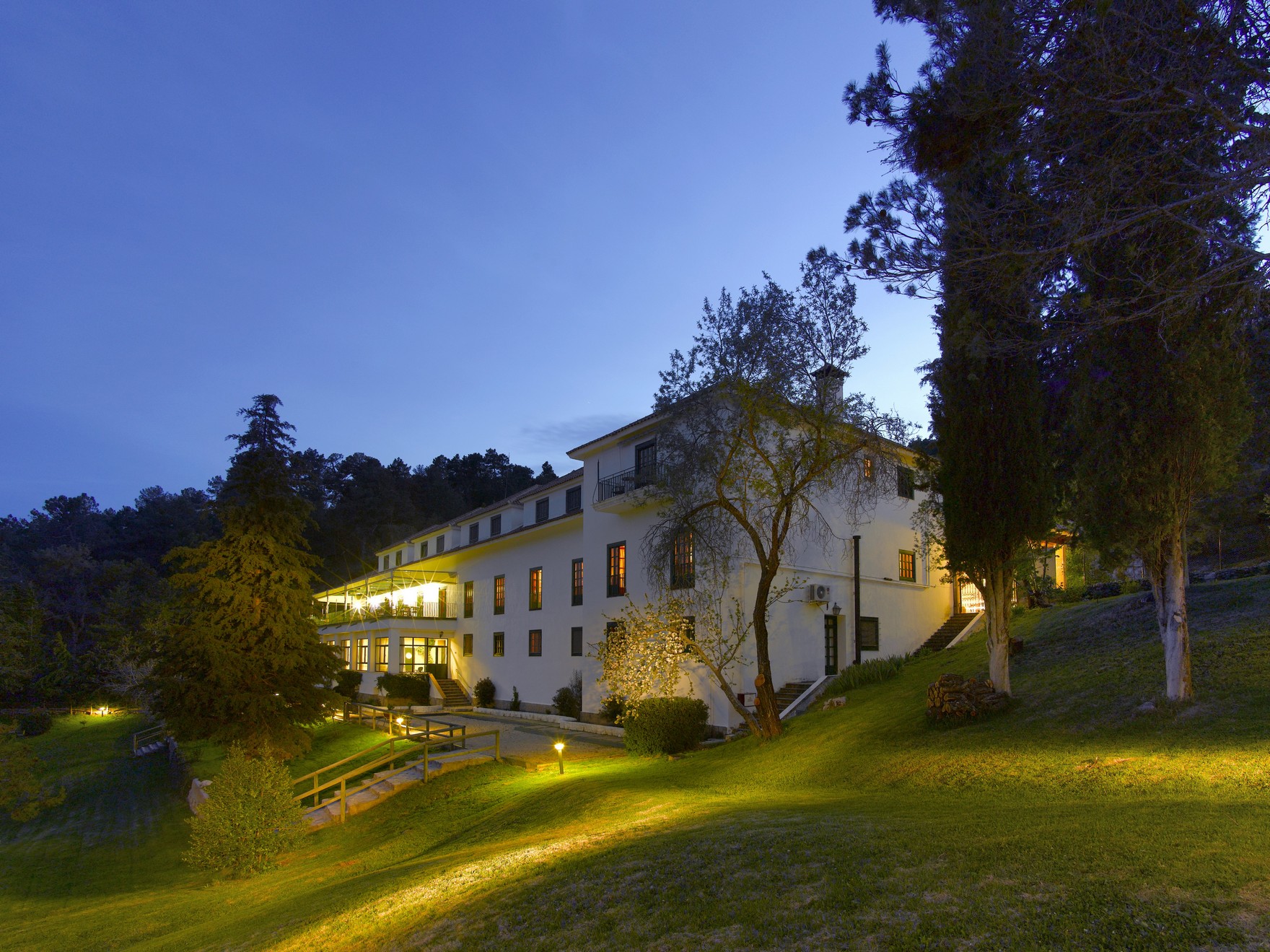
- Parador de Gredos (Ávila):
Holding the distinction of being the first-ever Parador, Gredos is more than just a historic milestone; it’s a tribute to Spain’s natural beauty. Perched high in the Gredos Mountains, this establishment offers panoramic views of the Tormes Valley, the Gredos massif, and even distant peaks of the Sierra de Béjar. The surrounding area, with its crystalline streams, glacial lagoons, and dense pine forests, is a paradise for hikers and nature lovers. The Parador itself, with its stone walls and warm interiors, provides a cozy retreat after a day of exploration. (Official Website)
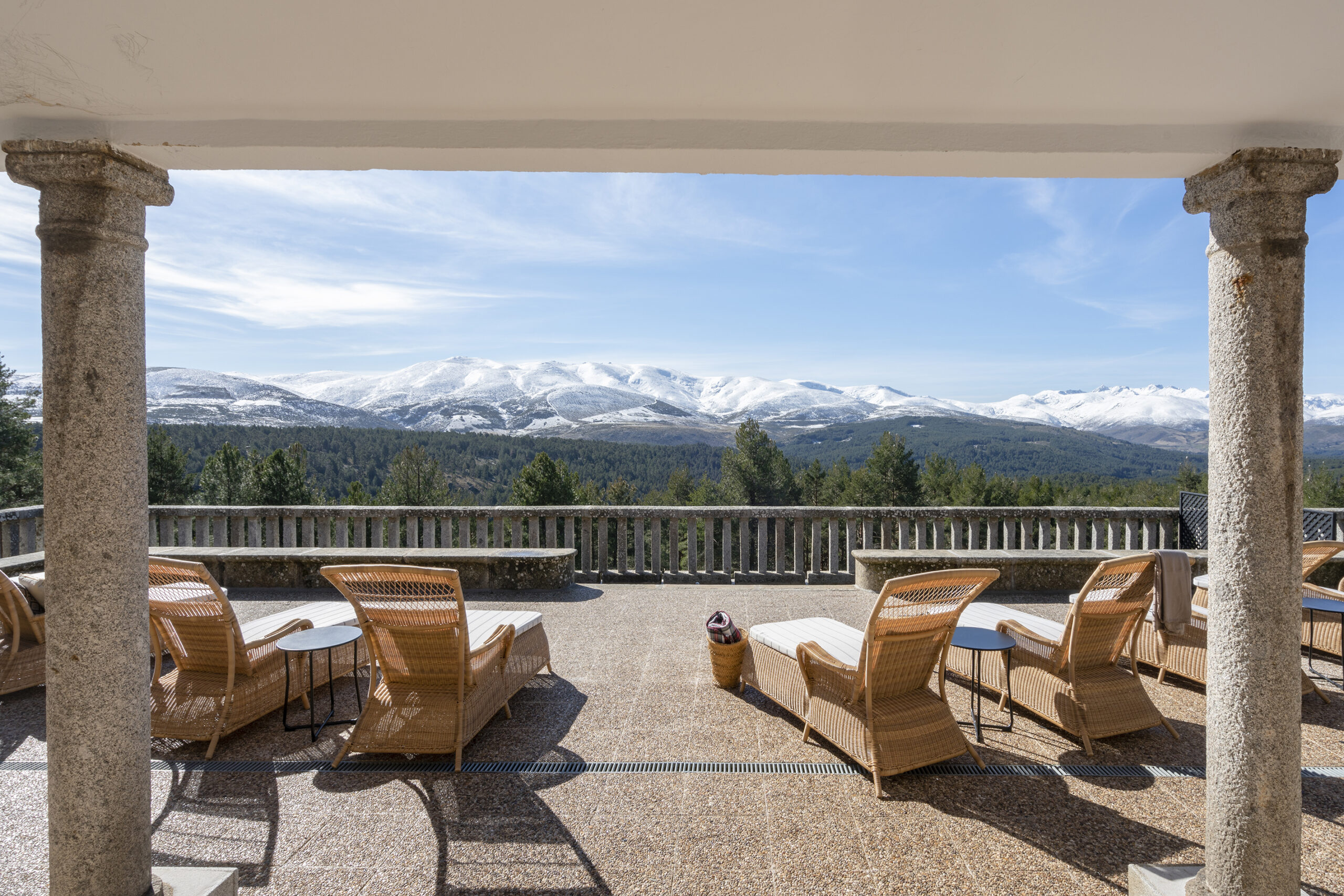
- Parador de Cruz de Tejeda (Gran Canaria):
Situated almost 1,500 meters above sea level, this Parador offers a unique perspective of Gran Canaria. Surrounded by lush pine forests and rugged landscapes, guests are treated to views that stretch from the basin of Tejeda to the Atlantic Ocean. The establishment, with its spa and wellness facilities, ensures that guests can relax and rejuvenate amidst nature. The nearby trails, leading to landmarks like Roque Nublo and Roque Bentayga, offer glimpses of the island’s geological wonders and indigenous history. (Official Website)
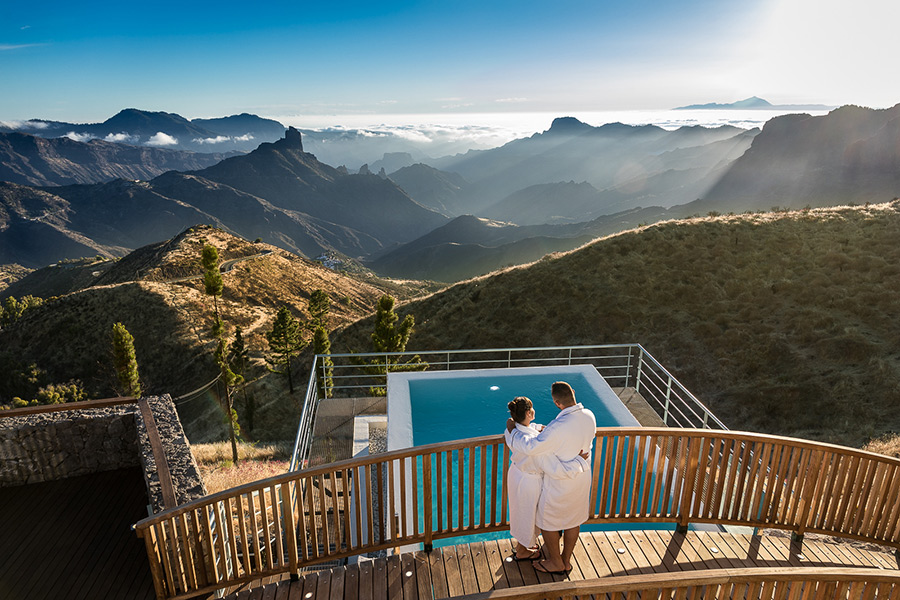
Staying in these Paradores is an invitation to disconnect from the hustle and bustle and connect with nature. Each establishment, while offering modern comforts, ensures that the essence of the surrounding landscape is at the heart of the guest’s experience. Whether you’re a seasoned nature enthusiast or someone seeking a serene escape, these Paradores promise an unforgettable rendezvous with Spain’s natural wonders.
Gastronomic experiences in paradores: savoring Spain’s culinary heritage
Spain’s culinary landscape is as diverse and rich as its history and culture. Each region boasts its own flavors, ingredients, and traditions, making Spanish cuisine a delightful journey of discovery. The Paradores, with their commitment to authenticity and excellence, offer guests a unique opportunity to delve deep into this gastronomic treasure trove.
- Regional cuisine at the heart of the experience:
At the core of the Paradores dining experience is a deep respect for regional culinary traditions. Each establishment takes pride in sourcing local ingredients, preserving age-old cooking techniques, and presenting dishes that are emblematic of the region. Whether it’s the fresh seafood of Galicia, the hearty stews of Castile, or the vibrant tapas of Andalusia, dining at a Parador is a journey through Spain’s diverse culinary regions. This commitment ensures that guests not only enjoy a meal but also connect with the cultural and historical essence of the area. - Examples of traditional dishes you can’t miss:
While each Parador offers a plethora of regional specialties, there are some iconic dishes that stand out. In the northern regions, dishes like Fabada Asturiana (a hearty bean stew) or Marmitako (Basque tuna pot) warm the soul. The central plains might introduce you to Cochinillo Asado (roast suckling pig) or Migas (fried breadcrumbs with meats). Andalusia, with its Moorish influences, boasts of Salmorejo (cold tomato soup) and Flamenquín (breaded pork or ham). The islands aren’t left behind with specialties like Papas Arrugadas (wrinkled potatoes) from the Canaries. Each dish, meticulously prepared, tells a story of the land, the people, and their traditions. - Wineries and wines: sipping Spain’s essence:
Spain’s wine heritage is legendary. With regions like La Rioja, Ribera del Duero, and Penedès, the country is a frontrunner in the world of wines. Many Paradores, recognizing the significance of this heritage, are situated close to historic vineyards and offer curated wine experiences. Guests can embark on wine tours, participate in tastings, and even witness the age-old process of winemaking. From the robust reds of Priorat to the sparkling Cava of Catalonia, the Paradores ensure that guests get a taste of Spain’s finest. For those keen on deepening their wine knowledge, establishments like the Parador de Santo Domingo de la Calzada in La Rioja are a must-visit. (Official Website)
Dining at a Parador is more than just a meal; it’s an immersion into Spain’s rich culinary tapestry. Each bite, each sip, is a celebration of traditions that have been passed down through generations. For travelers keen on understanding Spain’s soul, its cuisine, presented authentically at the Paradores, is the perfect gateway.
How to choose the perfect parador for your trip
Spain’s Paradores offer a myriad of experiences, each unique and memorable in its own right. From ancient fortresses to palatial estates, from coastal retreats to mountain hideaways, the choices are as diverse as Spain itself. But with such an array of options, how does one choose the perfect Parador for their trip? Here’s a guide to help you make an informed decision, ensuring your stay is nothing short of magical.
- Tips based on the type of experience you seek:
- Romantic getaways: If you’re looking to rekindle the romance, opt for Paradores set in serene locations. The Parador de Alarcón, set in a 8th-century castle overlooking the Júcar River, offers intimate settings and breathtaking views. (Official Website)
- Historical deep dives: For history buffs, Paradores set in ancient monasteries, palaces, or fortresses are ideal. The Parador de Granada, for instance, is set within the Alhambra complex, offering a direct portal to Spain’s Moorish past. (Official Website)
- Gastronomic journeys: If your trip is driven by your palate, choose Paradores known for their culinary excellence. The Parador de Pontevedra, located in Galicia, is renowned for its seafood dishes and traditional Galician cuisine. (Official Website)
- Nature retreats: For those looking to connect with nature, Paradores set amidst national parks or coastal areas are perfect. The Parador de Cazorla, as previously mentioned, offers an immersive experience in the heart of a natural park.
- Wellness and relaxation: If relaxation is your goal, look for Paradores with spa facilities and wellness programs. The Parador de Corias, set in a former monastery, offers spa services amidst historic settings. (Official Website)
- Considerations based on season and special events:
- Seasonal beauty: Some Paradores offer unique experiences in specific seasons. For instance, the Parador de Vielha is a winter wonderland during the snowy months, perfect for those seeking a cozy mountain retreat. (Official Website)

-
- Festivals and events: If you’re keen on experiencing local festivals, choose a Parador close to the action. For instance, staying at the Parador de Teruel during the Fiesta del Ángel ensures you’re at the heart of the festivities. (Official Website)
- Avoiding the crowds: If peace and solitude are what you seek, consider Paradores in off-the-beaten-path locations or travel during off-peak times. The Parador de Verín, set amidst the verdant Galician landscape, promises tranquility year-round. (Official Website)
Choosing the perfect Parador is about aligning your travel aspirations with what each establishment uniquely offers. Whether you’re seeking romance, history, gastronomy, or relaxation, Spain’s Paradores promise an experience that’s tailored just for you.
Conclusion: the legacy and allure of Spain’s paradores
Spain, with its rich tapestry of history, culture, and natural beauty, has always been a magnet for travelers. Yet, beyond its iconic landmarks and bustling cities lies a treasure that offers a deeper, more intimate connection to the nation’s soul: the Paradores.
Preserving Spain’s Heritage:
The Paradores initiative is not just about luxury accommodation; it’s a testament to Spain’s commitment to preserving its heritage. These establishments, often set in historical edifices, play a pivotal role in the conservation of the country’s architectural and cultural legacy. By transforming ancient castles, monasteries, and palaces into state-of-the-art accommodations, the Paradores ensure that these structures, which have witnessed centuries of history, continue to be relevant and cherished. This symbiotic relationship between tourism and conservation has not only breathed new life into these edifices but has also raised awareness about the importance of heritage preservation. (Paradores Official Website)
An Invitation to Experience Spain’s Essence:
Staying in a Parador is more than just a night’s accommodation; it’s an invitation to journey through time. It’s about waking up in a room that once housed royalty, dining in halls where historic treaties were signed, or wandering through gardens that have inspired poets. Each Parador, with its unique history and ambiance, offers a narrative, a story that adds depth to the traveler’s Spanish sojourn.
For those seeking to truly understand and immerse themselves in Spain’s multifaceted identity, the Paradores offer a gateway. Whether it’s the romance of Andalusian palaces, the majesty of Castilian fortresses, or the serenity of Galician monasteries, these establishments promise experiences that linger long after the journey ends.
In conclusion, Spain’s Paradores are more than just hotels; they are custodians of the nation’s rich legacy. For travelers, they offer a unique opportunity to not just witness, but to live, breathe, and savor Spain’s history and culture. So, as you chart your Spanish adventure, consider making a Parador a part of your itinerary. It’s not just a stay; it’s an experience, a story, a memory waiting to be made.
Photos sourced from the official Paradores of Spain website: www.paradores.es





